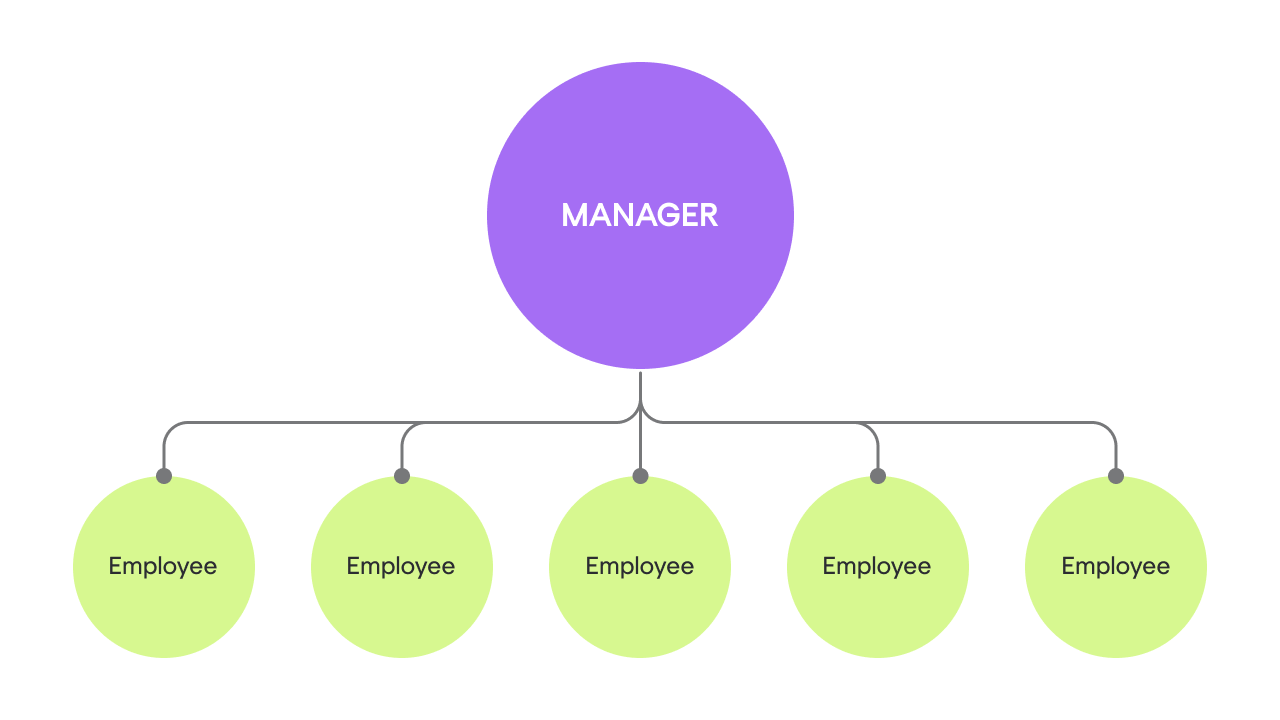Interviewing & Evaluating For Leadership Qualities : 70 Questions To Ask (9 Minute Read)
Having strong leaders in your organization can differentiate you from other businesses and set your company on a path of continuous improvement. While we’ve written extensively on soft skills for effective leadership and how to become a better leader, building a team of strong leaders actually begins with the hiring process.
How can you determine if a candidate will lead a team to glory or leave them floundering without a purpose or direction? It’s not an exact science. But there are strategies you can use beginning during the interview process. This guide will outline the traits to look for in potential candidates, as well as 70 questions for interviewing and evaluating leadership qualities.

Essential leadership qualities to evaluate

While leadership itself is a skill, there’s a lot packed into being a good leader.
Look for team members who strive beyond transactional leadership to achieve transformational leadership. Transformative leaders inspire and motivate their team to reach new levels of professional and personal growth, boosting morale and self-confidence.
They are able to identify the strengths and weaknesses of the people they work with to help them achieve their goals, as well as the shared vision of the organization.
These are some of the top leadership qualities to look for in potential candidates.
- Adaptability
- Integrity
- Empathy
- Compassion
- Accountability
- Self-awareness
- Emotional Intelligence
- Resilience
- Vision
- Strong communication skills
- Creativity
- Transparency
- Decisiveness
- Courage
- Credibility
- Strategic thinking
- Ability to inspire others
Interview questions by category
Prepare for the future of work
Check out our latest ebook – the HR Field Guide to the Future – and assess your team’s readiness and risk for the forces driving business action.
Communication skills
Effective communication skills are the foundation of successful leadership, fostering trust, rapport, and collaboration while facilitating a free exchange of ideas in a positive and supportive work environment.
If a leader struggles with communication, the team is lost and rudderless, which is why it’s essential to ask targeted questions that reveal the candidate’s capacity for communication.
1. How do you handle disagreements on a team you’re leading?
2. What strategies have you used in the past to build rapport with team members or direct reports?
3. Describe a time you needed to adapt your leadership style to suit the needs of a team member.
4. How do you ensure everyone on a team feels heard and has their chance to speak?
5. How do you balance different communication styles on your team?
6. Describe a time you had to give negative feedback to a colleague or direct report.
7. Describe a situation where you had to persuade someone to see your point of view.
8. Describe a time you had to deliver bad news to your team.
9. What steps do you take to ensure you don’t display poor body language when communicating with colleagues or direct reports?
10. What strategies do you use to actively listen to team members?
11. Describe a time you used active listening to help resolve a misunderstanding or conflict.
12. What would you do if a team member continually showed up to meetings late?
13. Describe a time you had to pitch an unpopular idea to your colleagues. How did you go about it, and what was the result?
14. How do you encourage collaboration across team members?
Emotional intelligence
Leaders must be able to understand and manage their own emotions while also recognizing and empathizing with the feelings of their team members and clients. Employees need to feel confident that their leader understands where they’re coming from and won’t fly off the handle if they come to them with a problem or innovative, out-there idea.
Ask questions that reveal a candidate’s emotional intelligence and empathy:
15. Describe a time when you resolved a conflict by understanding the other person’s perspective.
16. What are your strengths and weaknesses as a leader?
17. What steps have you taken to improve upon your weaknesses as a leader?
18. Have you ever had to fire someone? How did you approach the situation? If you haven’t, how might you approach the situation?
19. Describe a time you received critical feedback from a colleague or manager. How did you react?
20. What would you do if you noticed a team member crying at work?
21. Describe a time you worked with someone from a different background or culture. How did you work to understand their perspective?
22. What would you do if a team member was being notably rude or disrespectful?
Decision-making skills
Leaders must be able to think critically, problem-solve, and be decisive. They must understand that the buck stops with them.
Ask questions that get to the root of how quickly and effectively the candidate makes decisions. How does their previous experience qualify them for this new position?
23. Describe a time you had to make a quick decision without having all of the information at your disposal.
24. Have you ever made a decision you later regretted? What did you learn from that situation?
25. Have you ever made a decision for yourself or the organization that the team wasn’t happy with?
26. What’s your process for delegating tasks?
27. Describe a time when you successfully delegated, and the impact it had on your team’s performance.
28. Describe a time you had to make a difficult decision that impacted the entire team.
29. What do you do when things don’t go as planned?
30. What do you do when you disagree with a team member’s decisions?
31. Describe a complex problem you faced in the workplace and how you went about solving it.
32. How do you manage an employee who is consistently underperforming?
33. Describe a situation that demonstrates your thought process for solving complex problems.
34. Describe your approach to time management, especially when it comes to high-stakes projects and tight deadlines.
Integrity and ethics
A team needs to know they can trust the person leading them to make the right decision no matter the circumstance. When a leader acts with integrity and illustrates a strong moral compass, they inspire those around them to do the same.
It can be difficult to fully gauge someone’s integrity from a single interview, but these questions will help uncover a candidate’s true nature and decision-making process when it comes to ethical dilemmas in the workplace.
35. How will you be remembered in your last role?
36. How would you deal with an operational inefficiency within your team or department?
37. What steps would you take if you knew a direct report was lying to you?
38. What steps would you take if a superior behaved inappropriately in the workplace?
39. What if you were asked to do something at work that went against your values?
40. Has a workplace or superior ever pressured you to compromise your ethical standards? How did you handle the situation?
41. What would you do if you felt like a colleague was bullying or being rude to another team member?
42. What would you do if you saw a colleague taking credit for someone else’s work?
43. How do you stay informed about diversity and inclusion in the workplace?
44. How do you ensure your own actions align with a company’s values and ethical standards?
45. What would you do if a client or customer approached you to do work with them on the side?
46. What would you do if you were accused of something you knew you didn’t do?
Vision and strategic thinking
True leaders employ strategic thinking to make their own goals and the vision of the organization a reality. Ask questions that reveal how they set goals, align with your business priorities, navigate setbacks, and approach professional development.
47. What professional goals do you hope to accomplish in the next five to 10 years?
48. Can you share an example of how you built strong cross-functional relationships with different departments or teams?
49. How do you ensure your own professional goals align with and aid the company’s goals?
50. What do you hope to accomplish in your first 30, 60, and 90 days?
51. How do you see this role evolving in the future?
52. If you were chosen for this role, what would be your top priorities?
53. What opportunities do you see for this company or specific department to improve?
54. How do you help team members identify and reach their professional goals?
55. How do you help team members grow within their roles?
56. How do you continue to develop your management skills?
57. How do you ensure you and your team stay up-to-date with the latest industry trends and technological advancements?
58. Can you describe a time you led a team through a major workplace change or transition?
Learn how to use the core principles of adaptive leadership to navigate change in the workplace.
Ability to inspire and motivate
“Inspirational leaders elevate both morale and performance.”
A leader who motivates and inspires those around them will offer a positive domino positive effect in the workplace. Their energy and ability to bring people together, pick people up, and get the best out of each individual will permeate throughout the team.
Determine whether your candidate has what it takes to inspire those around them to be the best they can be.
59. What motivates you in your career?
60. How would you describe your leadership style?
61. Describe a time your management style helped an employee under your leadership.
62. How do you help foster a positive company culture?
63. How do you prioritize balance and wellness for both yourself and your team?
64.How do you inspire a team to work together to achieve shared goals?
65. How do you build and maintain trust with team members?
66. Describe the kind of environment you believe teams thrive in.
67. How would you motivate a disengaged team member?
68. How do you deliver kudos or congratulations to team members who go above and beyond?
69. How do you ensure all team members feel valued for their contributions?
70. How do you set clear expectations and goals for your team?
How The Predictive Index can help
PI Hire provides actionable, objective data integrated into your hiring process so that you can hire and retain exceptional leaders, decrease the chance of turnover, and utilize behavioral interview questions and your entire team’s feedback to determine who will be the best fit for the role.
Align early in the process to make better data-driven decisions further down the hiring funnel and get to the root of what makes for a star leader for each unique role.
Looking to elevate a current employee to a leadership position? The Predictive Index’s Inspire platform helps anyone become a better leader. Whether you’re a new people manager, an experienced executive, or simply want to grow as a leader, PI gives you the data you need to supercharge your leadership abilities.
Author:Jordan Nottrodt

Visit our website: www.compassleadershipadvisors.com
Follow us for more information on LinkedIn
Got a question? Email us











Share On: